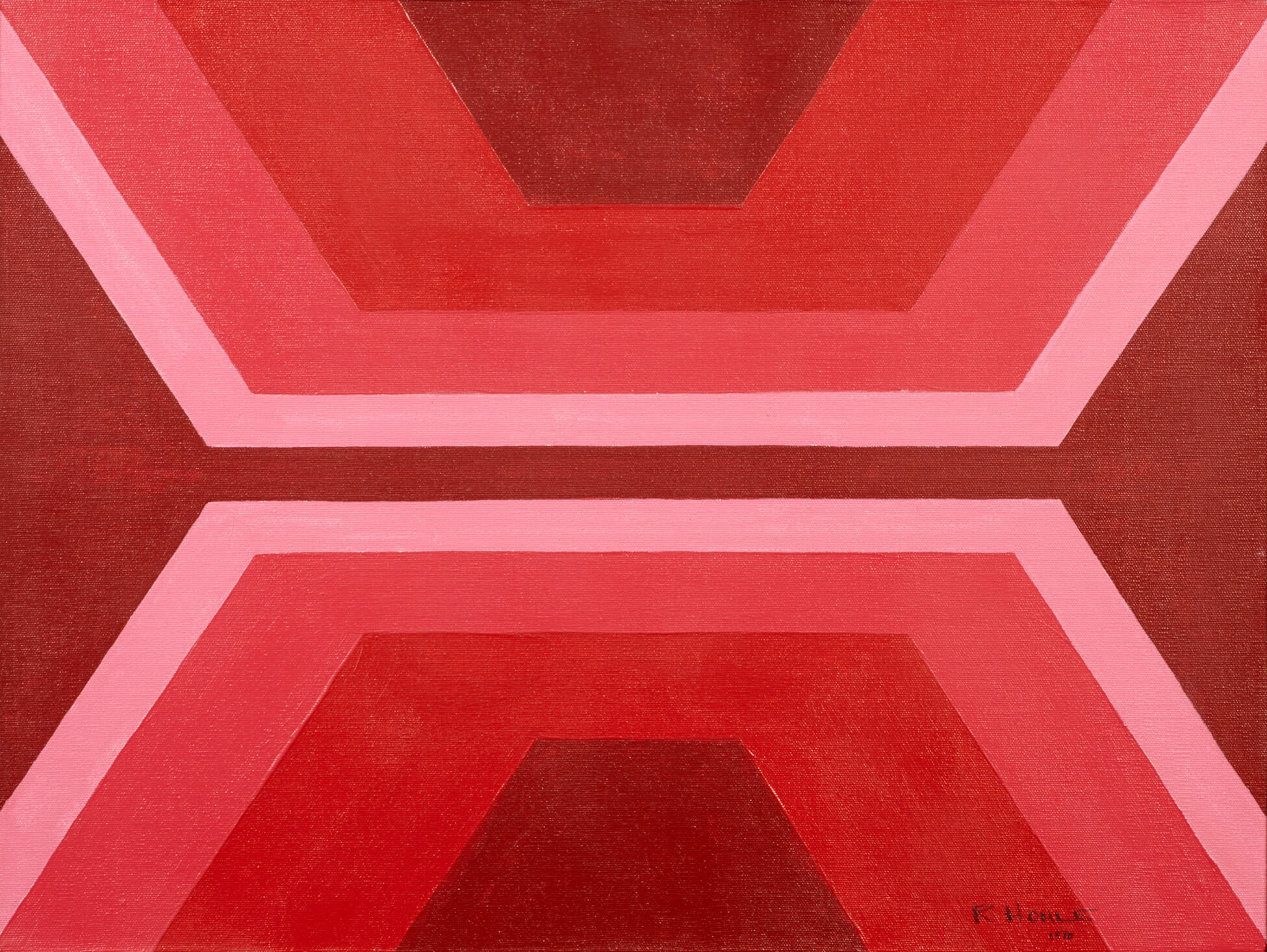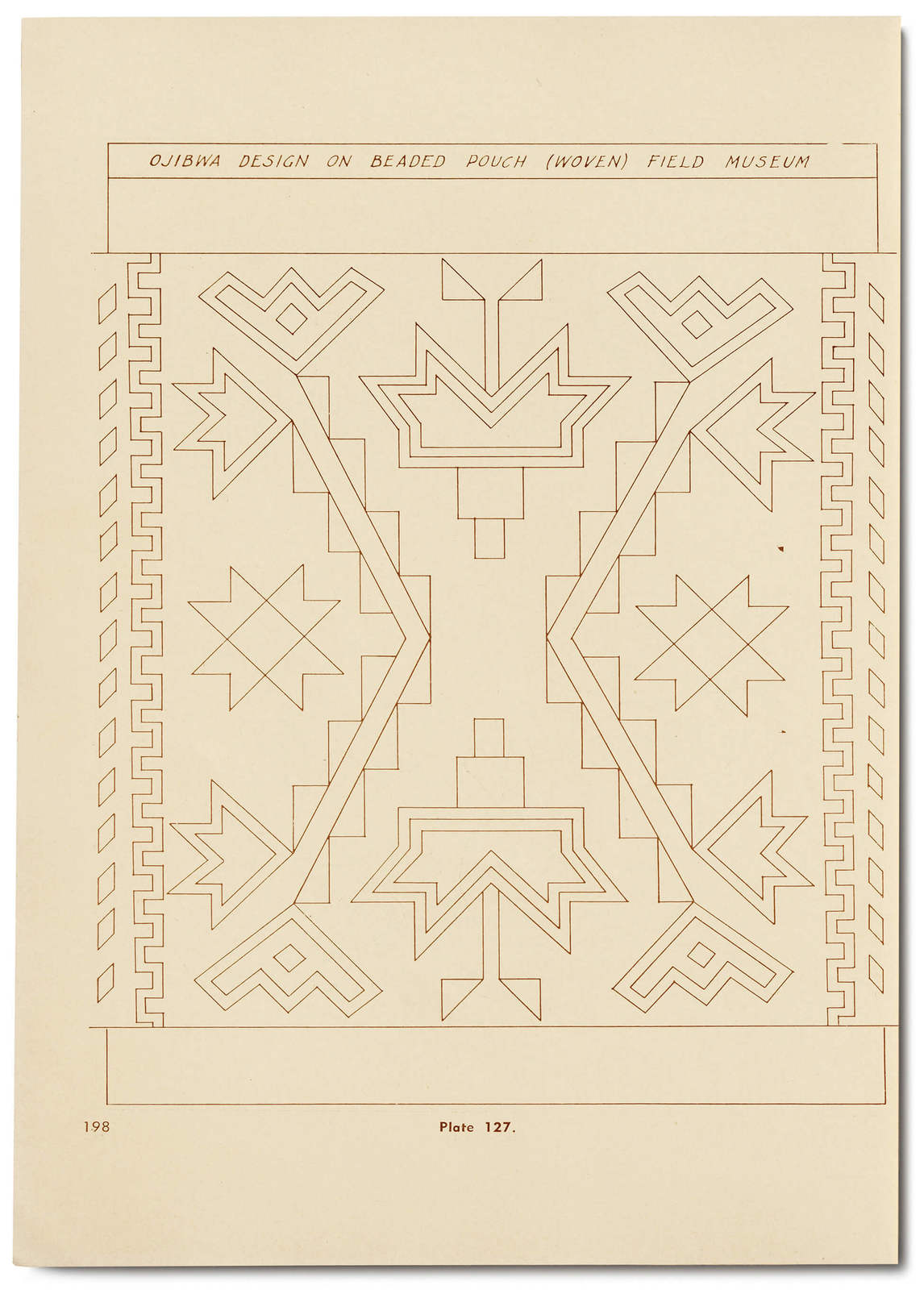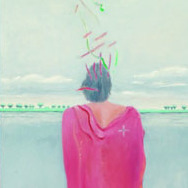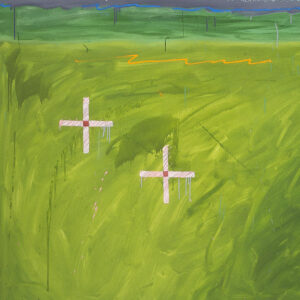Red Is Beautiful 1970

Robert Houle, Red Is Beautiful, 1970
Acrylic on canvas, 45 x 61 cm
Canadian Museum of History, Gatineau
One of Houle’s earliest paintings, Red Is Beautiful was produced while he was a student at McGill University. The painting’s smooth surface consists of two diagonal geometric forms in shades of red and pink, set against a flat red background, with the forms converging at the centre of the canvas. The composition was inspired by geometric designs used in traditional woven bags, patterns that Houle encountered in Carrie A. Lyford’s book Ojibwa Crafts (1943), which provided him with an early introduction to traditional Ojibwa designs. He was drawn to the spiritual relationships between these patterns and traditional ceremonial objects.


Red Is Beautiful is linked stylistically to twelve other paintings influenced by the designs in Lyford’s book and that took inspiration from love poems written by Houle’s friend Brenda Gureshko. Responding to an assignment from a professor at McGill University in Montreal to paint “love,” Houle created twelve monochromatic, pastel-coloured abstractions on rectangular canvases, including Epigram the Shortest Distance, The First Step, and The Stuff of Which Dreams Are Made, all 1972; and one triangular-shaped painting, Wigwam, 1972. The paintings were acquired by the Department of Indian and Northern Affairs (now Indigenous and Northern Affairs Canada) in 1972.
Several of Houle’s early abstractions, including Red Is Beautiful and another early work, Ojibwa Purple Leaves, No. 1, 1972, also reveal the influence of painters Frank Stella (b. 1936) and Barnett Newman (1905–1970). A relatively unknown and rarely exhibited work, Red Is Beautiful foreshadows Houle’s future direction—a vision and practice that embraces modernism, Indigenous designs, and the spiritualism that he discovered in the geometric patterns of Ojibwa crafts.

 About the Author
About the Author
 More Online Art Books
More Online Art Books
 Acknowledgements
Acknowledgements